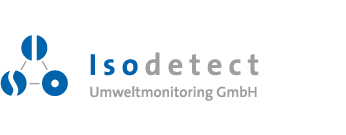Innovation
Technology transfer and engineering practice
As a spin-off from the Helmholtz research centers in Munich and Leipzig, Isodetect has a direct line to the latest developments in the field of groundwater, contaminated site and isotope research. Our goal is to quickly implement new findings in engineering practice through effective technology transfer. With our development concept, we are helping to ensure that Germany remains a leading technology location for environmental isotope applications.
Here we explain some scientific basics about isotope values and the quantification of pollutant degradation with the help of isotope enrichment. You will also find a database (ISOFRAC) of the isotopic enrichment factors ε of environmental pollutants. We will inform you about the goals and partners of our current research projects.
Bio-UGS - Targeted biological conversion of carbon dioxide and hydrogen to methane in pore underground storage - Monitoring of microbial methane formation in pore storage using isotope chemical and molecular genetic analyzes (KMU innovative, 01/2020 - 07/2023)
The aim of Bio-UGS is to track and stimulate potential biological methane formation through CO2 reduction in natural gas storage tanks that are filled with hydrogen. This synergistic process contributes to reliable energy supply and at the same time to the elimination of oxidized carbon.
Fate-PFT - Sound source identification and degradation assessment of polyfluorinated surfactants (PFTs) in the water cycle using component-specific isotope analysis and diagnostic ratios (KMU innovative, 07/2021 - 12/2023)
IsoFlux - Isotope values of pollutant loads: a new assessment instrument for the degradation and forensics of contaminated groundwater sub-project: Isotope analyzes for proof of degradation and for determining the origin of groundwater pollutants from new types of passive samplers (BMBF, 04/2021 - 11/2023)
The load of a pollutant transported with groundwater is a key parameter in the assessment of contaminated sites. In IsoFlux, innovative, pollutant-absorbing passive collectors are being developed to measure this parameter with extreme sensitivity. Based on this tool, Isodetect develops an isotope method to quantify pollutant degradation and derive their origin.
IsoGW - Groundwater Isoscapes for Germany: Water isotopes as an innovative tool for sustainable water management (BMBF LURCH, 03/2023 - 02/2026)
Water isotopes (tritium, deuterium, oxygen-18) provide key information to assess the safety of drinking water by groundwater age dating. Since 2005, Isodetect has been conducting a large number of groundwater dating studies, the results of which are integrated into a nationwide map overview. In addition, we introduce these tool in new investigation concepts for heavy rain risk assessments.
LIFE Sedremed - Enhanced bioremediation of contaminated sediments in coastal areas of ex-industrial sites (EU LIFE, bis 03/2025)
In the EU LIFE project SEDREMED we follow natural and technologically stimulated decomposition processes of polyaromatic hydrocarbons in a contaminated marine coastal sediment of Bagnoli, Napoli. Novel methods for preparation and success control of innovative remediation technologies from EKOGRID & IDRABEL, are developed together with the University of Ancona and the Stazione Zoologica Anton Dohrn.
Life MySoil - Development of a mycoremediation technology to remediate all petroleum-derived organic pollutants from aged industrial contaminated soils (bis 08/2024)
LIFE MySoil is a joint project of 8 European partners in which special fungi are cultivated and introduced into contaminated soil for purification. For the first time, Isodetect is using innovative in situ microcosms (MYCOTRAPS) to prepare and monitor the success of this soil remediation process.
We are pleased to accept analytical orders from a great variety of research projects. For example, Isodetect analyzed primate hair (gorillas, chimpanzees) within the PanAf project at the Max Planck Institute for Anthropology in Leipzig. We look forward to similar challenges.
